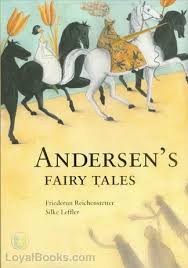The False Collar
byThe False Collar begins its journey with great confidence, priding itself on charm, appearance, and imagined status, despite being nothing more than a piece of laundry. It admired itself in its owner’s room and believed that simple tools like the bootjack and comb, which served its upkeep, were personal belongings, inflating its sense of worth. Convinced it was a refined gentleman, the collar began seeking companionship among other garments, starting with a garter that seemed elegant and refined. Its approach, dripping with self-congratulation, failed to charm the garter, who found the collar far too bold. She accused it of behaving like the worst kind of suitor, one who assumes too much. Despite this rejection, the collar felt no shame, instead rewriting the exchange in his mind as a mutual flirtation that simply ended too soon.
Not deterred by the garter’s disinterest, the collar set its sights on the iron during laundry day. As it was pressed and stiffened, it took the opportunity to flatter the iron with exaggerated praise. The iron, unimpressed, corrected him by asserting its identity as a steam engine, cutting the conversation short with indifference. The collar, again rejected, was too proud to reflect on the truth, and instead convinced himself the iron was shy. He then tried charming the scissors during a trimming session, but the sharp blades offered only sarcasm in return, dismissing his affection as uninvited and ridiculous. Each interaction revealed how the collar’s view of itself clashed with how others perceived it. Still, it refused to confront the reality of its insignificance, choosing instead to believe in a fantasy where every rejection was proof of its irresistible appeal.
As its luck continued to falter, the collar approached the comb, only to be told that she was already promised to the bootjack, a union it found perfectly reasonable. The collar, shocked by how mundane items found love, still tried to keep face by pretending not to care. Internally, the sting of rejection settled, yet the collar masked it with more boastful delusions. Eventually, its usefulness wore thin, and the once-proud collar found itself tossed into a rag bin at a paper mill. Surrounded by discarded scraps of fabric, it maintained its grand stories, recounting imaginary romances and dramatic heartbreaks to anyone who would listen—or to no one at all. It never saw itself as a discarded piece of linen but as a relic of social prestige, misunderstood and unappreciated.
The tale cleverly critiques those who build identities on appearance and ego, rather than substance and humility. Andersen’s satire does not merely mock arrogance; it reminds us how self-delusion can trap us in cycles of disappointment and denial. By humanizing ordinary household objects, he reveals how absurd vanity can be when seen from an honest perspective. Even when the collar’s environment changed, it clung to its former fantasies, unable to adapt or learn from its experiences. This refusal to grow made it both tragic and comical, a symbol of how pride, when unchecked, can strip one of real connection. In life, genuine relationships and humility often matter more than showmanship and imagined status.
Adding a subtle lesson, the story encourages readers to embrace self-awareness and value sincerity over image. The collar’s refusal to recognize his limitations kept him lonely, while other objects, grounded in reality, formed meaningful connections. In the end, “The False Collar” is more than just a light-hearted tale—it’s a mirror held up to society, reflecting the pitfalls of inflated self-worth and the foolishness of mistaking maintenance for ownership, admiration for love, and routine for grandeur. Its humor lies in its honesty, and its charm lies in the lesson that grace comes from knowing who you are—not who you pretend to be.

